Ca Mau The lighthouse from the French colonial period on the 284-meter peak of Hon Khoai Island, Ngoc Hien District, always lights up 12 hours a night, helping ships at sea determine their direction.
After 34 years as a lighthouse keeper, Mr. Huynh Van Ha (from Thai Binh ) traveled around seven islands in Ca Mau, worked at lighthouse stations, and then returned to Hon Khoai, where he first set foot in 1992. That trip took more than half a lifetime, but leaving and returning to Hon Khoai three times was likened to fate.
In the spring of 1992, a young man in his twenties from Tien Hai (Thai Binh) followed an oil tanker to Hon Khoai Lighthouse Station to work. The ship anchored, the boat reached the large beach, and his comrades were waiting, some helping him with his belongings and receiving food supplies.
Mr. Ha put his backpack on the beach, leaned on his shoulder with the station staff, each carrying a ten-liter can of oil to run the generator to light the lighthouse. The road from the beach to the station was a kilometer and a half long, the men climbed up the steep slope, breathing through their ears, and after two hours they finally reached the top.
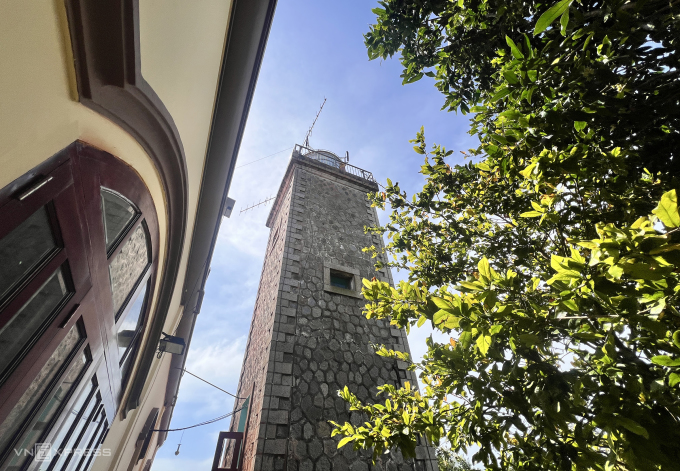
The square-shaped Hon Khoai Lighthouse is built of rubble and cement at an altitude of 284 m above sea level. The light tower is 15.7 m high, with each side measuring 4 m. Photo: Hoang Phuong
At the 284-meter high point of Hon Khoai - the tallest and widest island in the cluster of 5 islands of the same name, the lighthouse stands firmly against the sky. The 15.7-meter high light tower rises from the island's surface, an important milestone affirming the sovereignty of the southwestern territorial waters. The 4-square-kilometer island, 14 kilometers from Ca Mau, is considered to hold an extremely important position in terms of national defense and security, like a "forward station guarding the sky, sea and land strip in the southwest of the Fatherland".
In the memories of the lighthouse keepers at that time, they lived in the most luxurious house on the island, built during the French colonial period. The common room was about 40 square meters wide, and used to be the residence of the "island lord". Their job every day was to keep the lighthouse lit for 12 hours straight, from 6 p.m. the previous night to 6 a.m. the next morning.
In the dark night, the light from the independent lighthouse indicates the location of Hon Khoai, helping ships operating in the Ca Mau sea to navigate and determine coordinates. The effective range of the light reaches 26.7 nautical miles, the geographical visibility is equivalent to 41 nautical miles because it is located on a high point.
Hon Khoai Lighthouse Tower is part of the earliest lighthouse system in Vietnam's waters, built in 1899 during the French colonial period. The project is currently classified as a level one lighthouse in the national lighthouse system managed by the Ministry of Transport. At the foot of the lighthouse tower is a monument to the heroic deeds of teacher Phan Ngoc Hien - Hero of the People's Armed Forces who in December 1940 commanded a group of insurgents to occupy Hon Khoai, including the lighthouse staff.
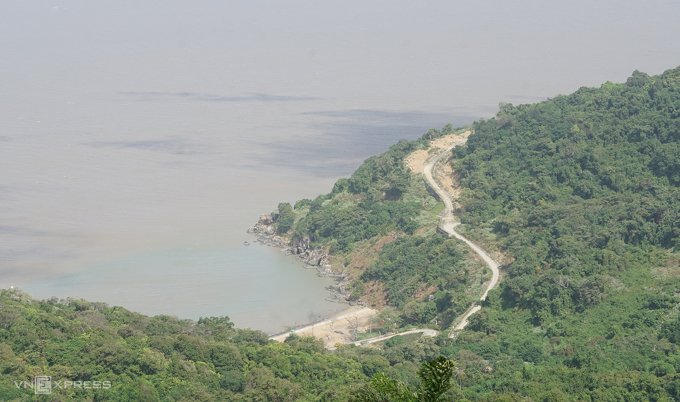
A corner of Hon Khoai seen from the lighthouse tower. Photo: Hoang Phuong
Under the watchful eyes of the lighthouse keepers, the light that guides ships at sea almost never goes out at night. "The lighthouse was only struck by lightning once during the storm season. The main light failed, but the auxiliary light was replaced immediately while waiting for repairs," said Mr. Ha, affirming that the impact of the weather is unavoidable.
More than thirty years after setting foot on the island, Mr. Ha returned to Hon Khoai lighthouse in early 2023 when his temples were white and his skin was tanned by the four seasons of island winds. Every time he returned to the island, he was "as happy as if he were coming home, even happy when he set foot on the stone steps".
Old colleagues have been transferred to other islands, but the lighthouse has remained largely unchanged. Only the ornamental plants have been better grown and the official residence has been slightly renovated. The road from the beach leading up to the lighthouse, which was still steep, has been paved with concrete. The station staff no longer have to carry cans of oil up the hill, but use motorbikes, and occasionally rely on a pickup truck from the border guards. Although life has improved a lot, there are still many unspeakable difficulties.
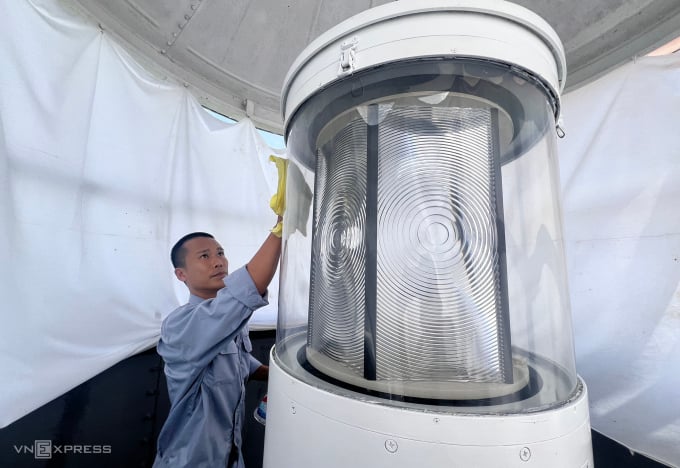
Mr. Tuan cleans the lamp every day, behind is a canvas to block the northeast wind. Photo: Hoang Phuong
The monsoon season is coming in the days before Tet, the sea is rough, the waves crash loudly against the embankment in front of the beach. Every day, Mr. Nguyen Van Tuan climbs up the lighthouse several times to check, re-tying the corner of the canvas cover that has been blown away by the wind. The 39-year-old man uses a towel to carefully wipe the lighthouse body to remove the salt air, one of the maintenance tasks to ensure the lighthouse is always lit.
The lighthouse runs on oil and solar energy, while the navy uses electricity for daily activities. "There is electricity from 8am to 10am in the morning and from 6pm to 10pm in the evening," Tuan said, announcing the daily electricity schedule. The electricity is only enough for staff to hold meetings and carry out urgent tasks.
The station is located on high ground with no underground stream, so there is often a shortage of water during the dry season. After Tet, six men, in addition to their professional work, will take turns carrying cans and buckets to fetch water for daily use at the stream near the foot of the island twice a day. After living there for a long time, Mr. Tuan "sees the shortages as normal".
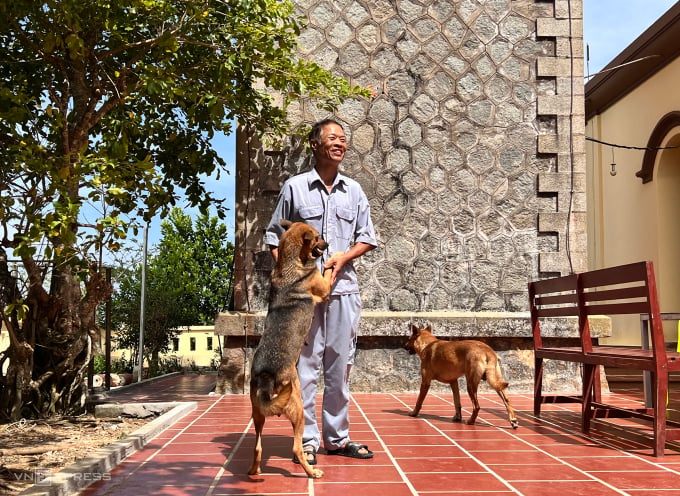
Mr. Ha and his two dogs Ki and Vang on the lighthouse station yard, January 2024. Photo: Hoang Phuong
The island is uninhabited, with only the navy, border guards, lighthouse staff and forest rangers on duty. In the absence of people, the station has a pair of dogs named Ki and Vang to keep them company. They stick close to people, and when they see them walking in the forest or exercising, they follow them. Every morning, when Mr. Ha puts on his walking shoes, he sees the two dogs standing in front of his room door, ready to follow.
"There were no people, no sight or sound, so when the group came to visit at the end of the year, we were very happy. We prepared tea and water and cleaned up a few days in advance," he said.
This year, Mr. Ha celebrates Tet on the island, his children work in Ho Chi Minh City, and only his wife is in Ca Mau. There are no boats on the island, so he doesn't know what to send his wife other than "full salary transfer" and a message of good health to the mainland. During the three days of Tet, the shift schedule has been assigned. Outside of their shifts, the lighthouse station staff occasionally come down to socialize with the stationed forces. The men on the island sometimes have only a few volleyball matches or friendly soccer matches before returning to their shift.
Asked about his wishes for the new year, Mr. Ha replied that he only needed to be "happy, healthy and confident" to do a good job, keep the light on until retirement, and help ships not get lost at sea at night. "If the lighthouse lights go out, we won't get paid," he said jokingly.
Hoang Phuong
Source link


![[Photo] President Luong Cuong presents the 40-year Party membership badge to Chief of the Office of the President Le Khanh Hai](https://vphoto.vietnam.vn/thumb/1200x675/vietnam/resource/IMAGE/2025/5/19/a22bc55dd7bf4a2ab7e3958d32282c15)
![[Photo] Close-up of Tang Long Bridge, Thu Duc City after repairing rutting](https://vphoto.vietnam.vn/thumb/1200x675/vietnam/resource/IMAGE/2025/5/19/086736d9d11f43198f5bd8d78df9bd41)


![[Photo] General Secretary To Lam attends the conference to review 10 years of implementing Directive No. 05 of the Politburo and evaluate the results of implementing Regulation No. 09 of the Central Public Security Party Committee.](https://vphoto.vietnam.vn/thumb/1200x675/vietnam/resource/IMAGE/2025/5/19/2f44458c655a4403acd7929dbbfa5039)
![[Photo] Panorama of the Opening Ceremony of the 43rd Nhan Dan Newspaper National Table Tennis Championship](https://vphoto.vietnam.vn/thumb/1200x675/vietnam/resource/IMAGE/2025/5/19/5e22950340b941309280448198bcf1d9)








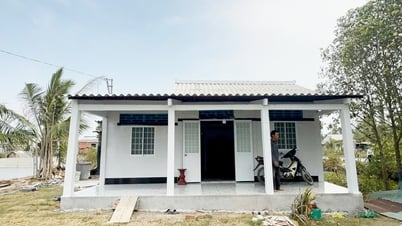

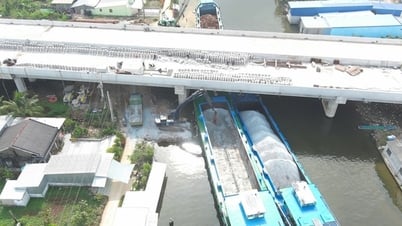

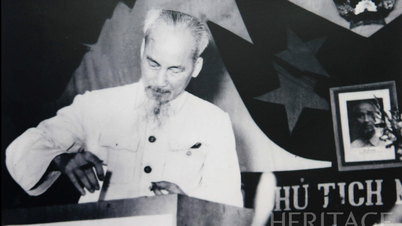
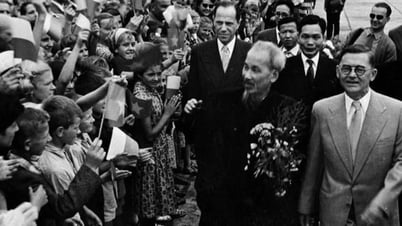

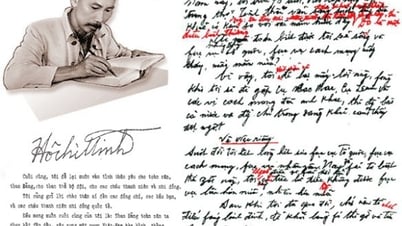

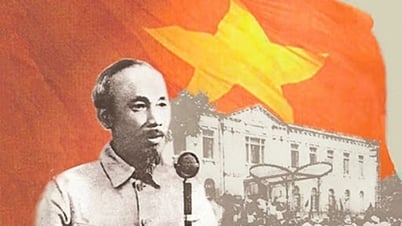


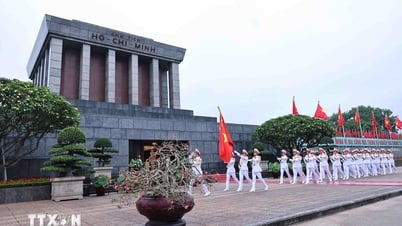











![[Photo] Prime Minister Pham Minh Chinh inspects the progress of the National Exhibition and Fair Center project](https://vphoto.vietnam.vn/thumb/1200x675/vietnam/resource/IMAGE/2025/5/19/35189ac8807140d897ad2b7d2583fbae)







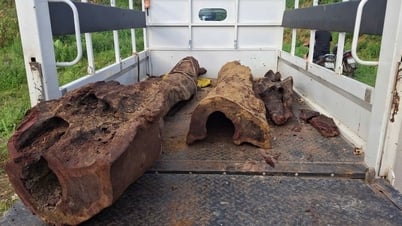











































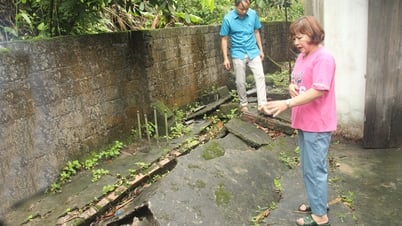

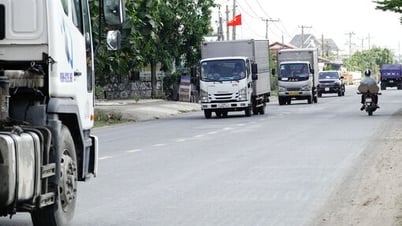





![[VIDEO] - Enhancing the value of Quang Nam OCOP products through trade connections](https://vphoto.vietnam.vn/thumb/402x226/vietnam/resource/IMAGE/2025/5/17/5be5b5fff1f14914986fad159097a677)





Comment (0)